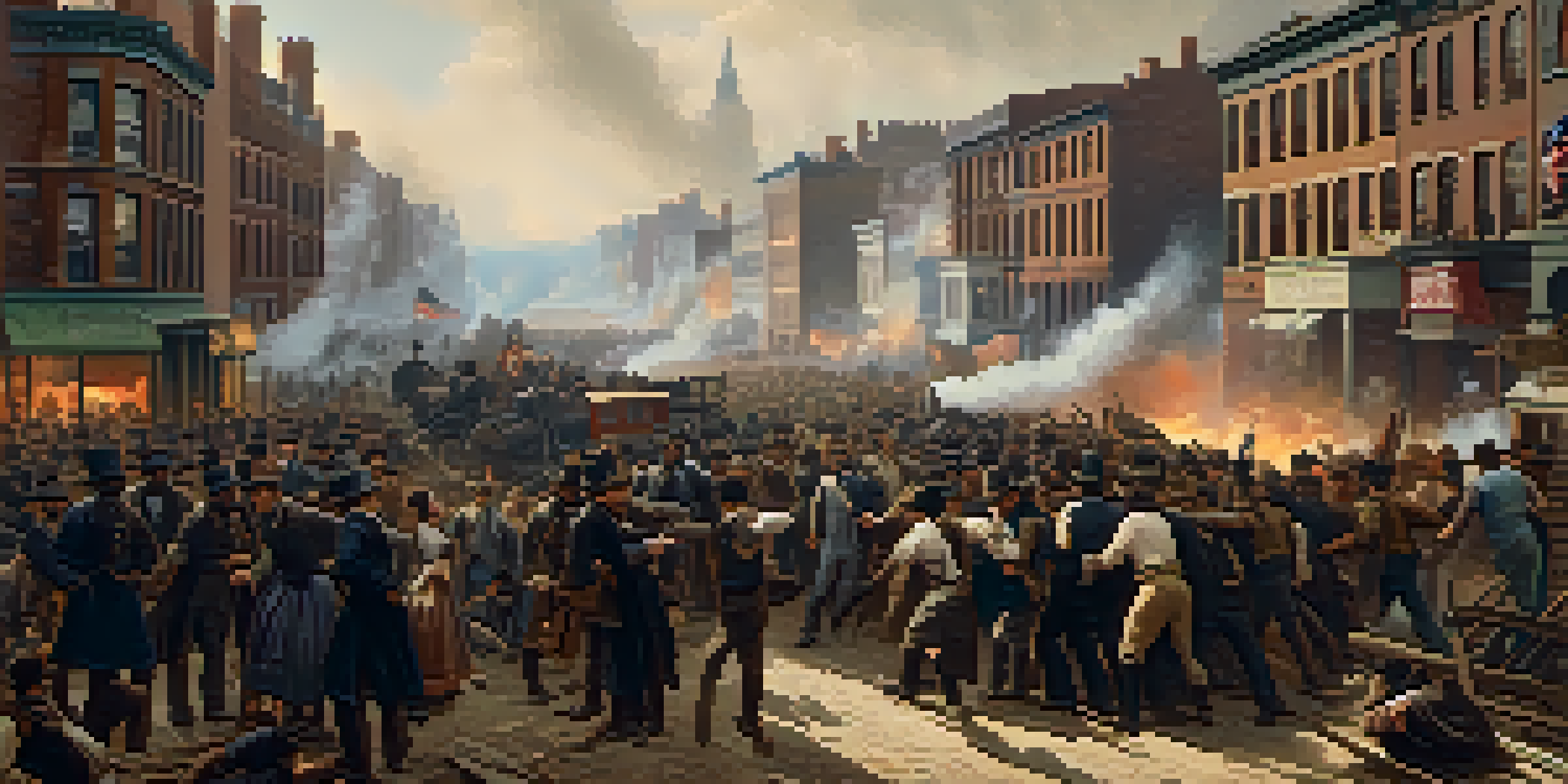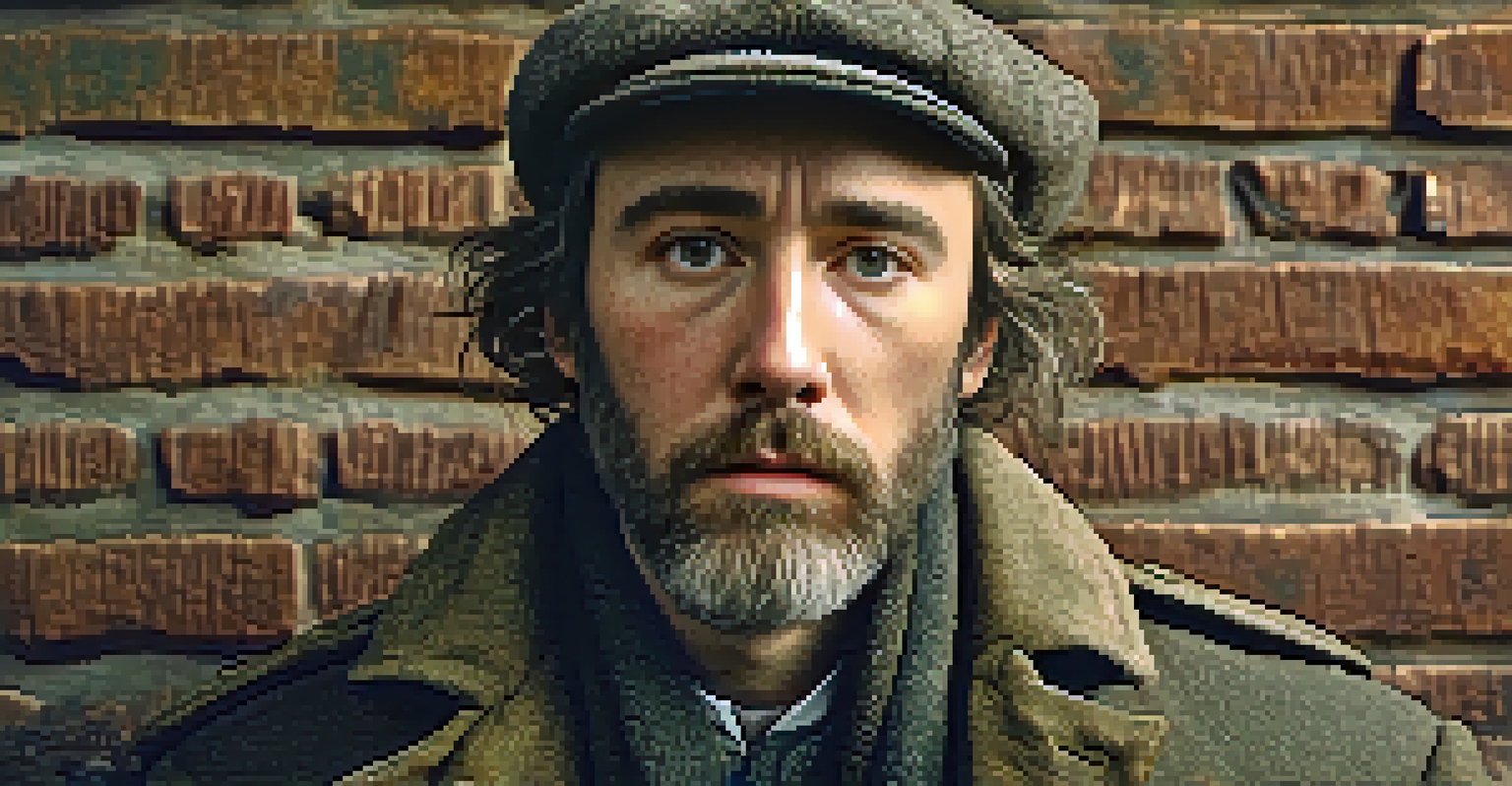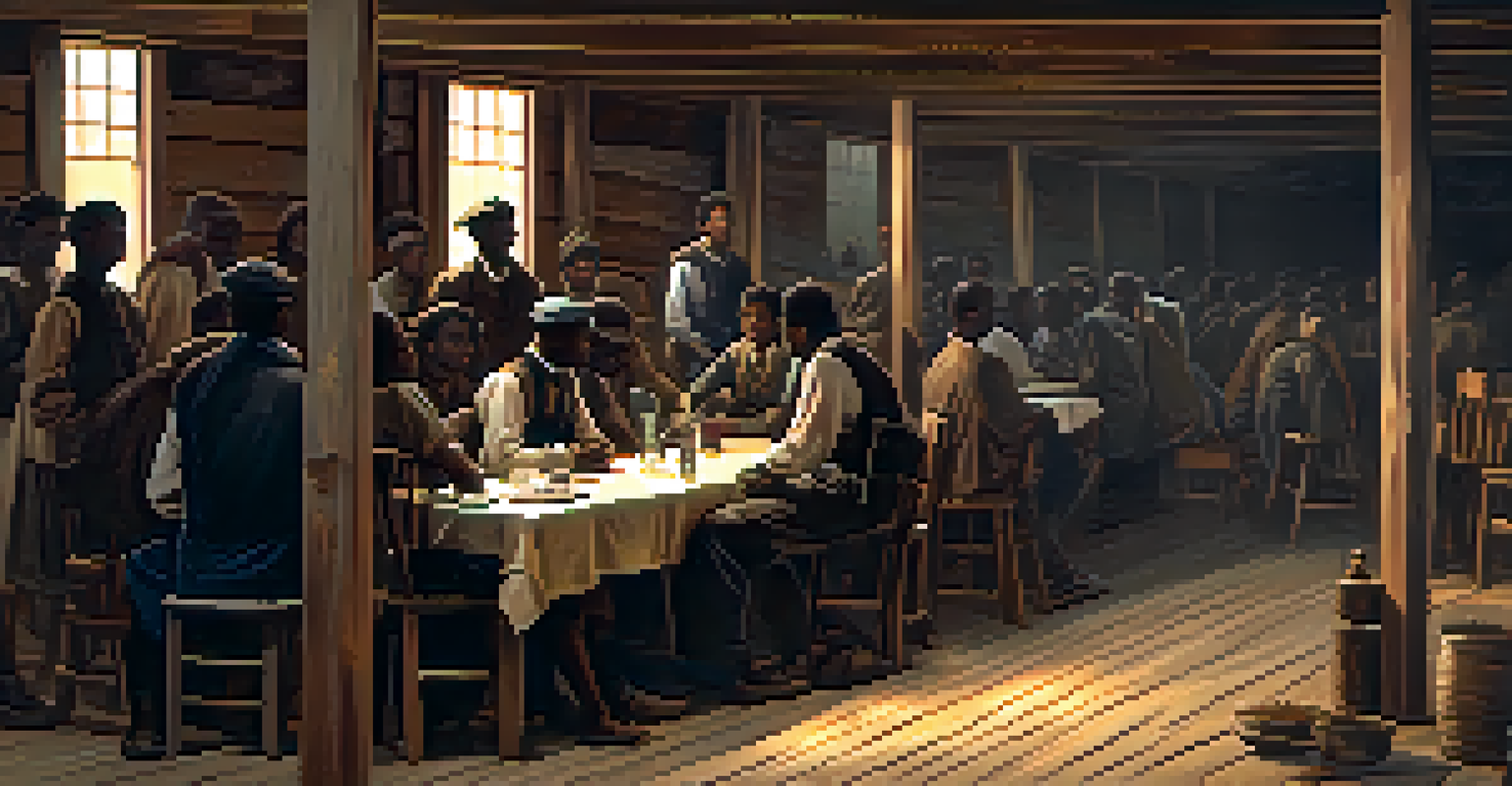The Draft Riots of 1863: A Turning Point in NYC History

Understanding the Context of the Draft Riots
In 1863, the United States was entrenched in the Civil War, and the need for soldiers was pressing. The government introduced the Enrollment Act, allowing for conscription, which mandated that men could be drafted into military service. This decision ignited widespread discontent among various groups, particularly in urban centers like New York City, where social and economic tensions ran high.
Injustice anywhere is a threat to justice everywhere.
As the war dragged on, many working-class New Yorkers, especially immigrants, felt the burden of fighting for a cause they often saw as distant from their daily struggles. The perception that wealthier citizens could buy their way out of service only deepened the resentment. The situation was a powder keg waiting for a spark, and the draft was that spark.
This growing unrest highlighted not just opposition to the draft but also deep-seated issues like racism, class disparity, and economic hardship. As individuals grappled with their frustrations, a violent response was brewing, setting the stage for one of the most chaotic events in the city's history.
The Spark: The Enrollment Act of 1863
The Enrollment Act, passed in March 1863, aimed to bolster the Union Army by conscripting men aged 20 to 45. However, the act offered a loophole: wealthier men could pay $300 to avoid service, which infuriated the poorer citizens who could not afford this option. This disparity fueled the flames of resentment, as many felt that the burden of war was falling disproportionately on the less fortunate.

As news of the draft spread, frustration turned to anger, particularly among Irish immigrants who were already facing discrimination and economic hardships. They viewed the act as another example of how the elite could evade responsibility while they were left to fight the battles of a country that marginalized them. With tensions mounting, it was clear that something had to give.
Draft Riots Fueled by Class Disparity
The 1863 Draft Riots emerged from deep-seated resentment among working-class New Yorkers, particularly immigrants, who felt unfairly burdened by conscription while wealthier citizens could evade service.
The tension reached a breaking point when the draft lottery began on July 11, 1863. Thousands gathered to watch the drawing, and the atmosphere was charged with anxiety and outrage. When the first names were drawn, it was as if a fuse had been lit, leading to the explosive events that would soon engulf the city.
The Outbreak of Violence
The Draft Riots officially began on July 13, 1863, when a mob of angry citizens took to the streets of New York City. Their anger was initially directed at the draft offices, where they began to riot and destroy property. The chaos quickly escalated as the mob targeted African Americans, blaming them for the war and the draft system, viewing them as competitors for jobs and resources.
The greatest crime is to compromise with injustice and to be an accomplice to oppression.
Over the next few days, violence erupted across the city, with buildings set ablaze and countless individuals attacked. The police and military struggled to regain control, as the sheer number of rioters overwhelmed law enforcement. Many neighborhoods became battlegrounds, and the city was in a state of emergency.
As the riots continued, the death toll began to rise, with estimates ranging from 100 to over 1,000 fatalities. The violence served as a grim reminder of the social fractures within the city, revealing deep-seated racial and economic tensions that would haunt New York for years to come.
The Role of Race in the Riots
Race played a pivotal role in the Draft Riots, as many white working-class citizens targeted African Americans amidst their anger and frustration. They believed that freeing enslaved people would only worsen their own economic struggles, as they viewed Black individuals as competition for jobs and housing. This racial animosity was compounded by long-standing prejudices and discrimination that had permeated society.
As the violence unfolded, countless African Americans were brutally attacked, with many seeking refuge in whatever safe spaces they could find. Some fled to the homes of sympathetic allies, while others sought shelter in police stations and other public buildings. The riots starkly illustrated how deep-seated racial tensions could erupt into violence, overshadowing the original grievances about the draft.
Racial Tensions Escalated Violence
Amidst their frustrations over the draft, white working-class citizens targeted African Americans, blaming them for economic struggles and escalating the violence during the riots.
This tragic chapter in New York City's history not only exposed the racial divides of the time but also led to a reassessment of how African Americans were treated in society. In the aftermath of the riots, many began to recognize the need for social reform and greater equality, although progress would be slow and hard-fought.
Government Response to the Riots
In response to the chaos of the Draft Riots, the government took decisive action to restore order in New York City. President Abraham Lincoln sent federal troops to the city, which helped quell the violence and reestablish a semblance of peace. The presence of soldiers demonstrated the seriousness with which the federal government viewed the unrest and its commitment to maintaining the draft.
However, the riots also highlighted significant flaws in the government's approach to the war and civil rights. Many citizens were left questioning the effectiveness of the draft and the fairness of its implementation. The riots prompted discussions about how to better address the needs and concerns of the working class, particularly among immigrants who felt marginalized.
The aftermath of the riots led to a more significant examination of civil liberties and the rights of citizens during wartime. As the government sought to regain control, it also faced the challenge of addressing the social issues that had fueled the unrest, setting the stage for future reforms.
The Aftermath: Long-term Effects of the Riots
The Draft Riots left a lasting impact on New York City, shaping its social and political landscape for decades to come. In the immediate aftermath, the city experienced a heightened sense of vigilance, with increased law enforcement and military presence in the streets. This new normal, while necessary for safety, also created an atmosphere of fear and distrust among communities.
Additionally, the riots underscored the urgent need for social reform, particularly concerning labor rights and racial equality. While progress was slow, the events prompted activists and reformers to rally for change, focusing on the rights of workers and the treatment of African Americans. The horrors of the riots served as a catalyst for many to join the fight for social justice.
Government Response to Civil Unrest
In the aftermath of the riots, the federal government deployed troops to restore order, highlighting the need for reforms addressing social issues and civil rights.
Ultimately, the Draft Riots of 1863 highlighted the complexities of American society during the Civil War era. The intersection of race, class, and politics provided a glimpse into the struggles that would continue to shape the nation long after the smoke of the riots had cleared.
Reflection on the Legacy of the Draft Riots
Today, the Draft Riots serve as a powerful reminder of the volatility of social tensions and the dire consequences they can unleash. They illustrate how fear and frustration can lead to chaos, particularly when combined with racial animosity and economic hardship. Understanding this history is crucial for recognizing the patterns that continue to emerge in contemporary society.
As we reflect on the legacy of the Draft Riots, it's essential to consider the lessons learned about the importance of empathy and dialogue. The events of 1863 remind us that addressing the root causes of unrest—such as inequality, discrimination, and disenfranchisement—requires collective action and a commitment to fostering understanding across communities.

Ultimately, the Draft Riots of 1863 mark a significant turning point in New York City's history. They not only revealed the fractures within society but also ignited conversations about civil rights and social justice that resonate to this day, encouraging us to strive for a more equitable and inclusive future.